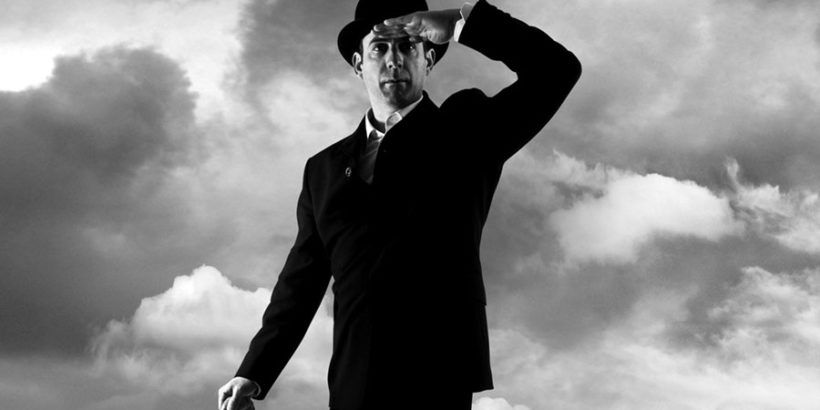The stock market’s 40% climb off its March bottom may be welcome news to most investors, but it shouldn’t be interpreted as a sign that the economic recovery will be speedy or that the happy days are here again.
“I like to call it the Rip Van Winkle approach, because if you went to sleep on, let’s call it Jan. 31st, and woke up today, you wouldn’t know that we had a health pandemic, you wouldn’t know that we have a lot of social unrest out there today, but we have a lot of challenges,” said Jeffrey Sherman, deputy chief investment officer at DoubleLine Capital.
“When I look at pricing, what’s happened thus far is that a lot of these markets that have Fed support or the perception of Fed support have rallied significantly,” Sherman said. “To me, that’s just underpricing risks on a go-forward basis.”
Advertisement
Sherman joined three other portfolio managers June 4 for an InvestmentNews virtual roundtable discussion to talk about what has happened so far this year, where markets are now and what the rest of 2020 will look like.
The other panelists were Linda Duessel, senior market strategist at Federated Hermes; Anne Mathias, senior rates and foreign currency strategist at the Vanguard Group; and Vince Montemaggiore, lead portfolio manager for Fidelity Advisor Overseas at Fidelity Investments.
Without diminishing the more than 400,000 deaths worldwide from the COVID-19 pandemic or glossing over the protests sparked by the tragic death of a black man at the hands of police in Minneapolis, the portfolio managers generally feel the financial markets responded in near-perfect harmony to the stimulus and financial rescue efforts put forward by Congress and the Federal Reserve.
In addition to a steady chorus of why you “don’t fight the Fed,” the panelists were virtually in lockstep on giving the government credit for acting swiftly to put money into the hands of millions of Americans who were forced out of work through no fault of their own.
“Going into the year, it all looked like the time was right to get some economic momentum really moving, then of course the virus hit,” Mathias said. “And what the Fed did was really just an absolutely massive liquidity intervention that cleared out the plumbing that was really having a lot of problems right at the beginning of the virus impact in the United States.”
Government rescue efforts
Acknowledging the contrast between the economic crisis triggered by the pandemic and the 2008 financial crisis, which was associated with bad banking practices among other things, Montemaggiore said the government faced fewer obstacles when it came to rescue efforts this time around.
“I think from the start, both the Fed and the government viewed it as, ‘This is nobody’s fault and we need to be there to help,’” he said.
But if a raft of forgivable business loans, trillions in stimulus checks, souped-up unemployment benefits and the Fed’s asset purchase program helped the stock market rebound quickly from its 30% drop over three weeks in March, the overall economy and the outlook for markets going forward remain on shaky ground.
While May unemployment data proved to be a positive surprise that gave equity markets another boost, the U.S. unemployment rate is still above 13%, which is seen as the biggest impediment to economic growth.
Meanwhile, the tech-heavy Nasdaq is hitting new highs, the S&P 500 Index is now positive for the year and the National Bureau of Economic Research calculated last week that the U.S. economy entered a recession in February.
“I just don’t see how we get real GDP back to where we were until at least sometime in 2022 at this rate, absent all the jobs coming back,” Sherman said. “If we get unemployment down to like 4% or 5% again at the end of the year, no problem, we’re back to there. But I feel very challenged on that.”
Duessel said the “devil is in the details” when it comes to the issue of unemployment.
“It’s all about employment coming back, because we have so many small businesses in this country, and it’s a lot easier for money to flow to big companies from our government than to little companies,” she said.
Small-business factor
The panelists saw the small-business factor as the primary reason that an economy that was so strong coming into the year can’t simply get back on its horse and keep charging ahead.
“The structure of the economy may change because there are so many small businesses that are really very likely to fail,” Mathias said. “I think this is going to be so damaging for small business in this country for a long time.”
As states start to relax restrictions on businesses and social distancing requirements related to the coronavirus, sweeping social unrest has emerged as a new wild card for the economy, which at times seems to be moving in a different direction than the financial markets.
“In the early part of a recovery, the market is always going to be out of sync with fundamentals because the market is very forward-looking,” Montemaggiore said. “But I think we’ve pulled forward too much because earnings drive stock prices. In my view, we don’t get back to 2019 earnings at a market level probably until 2022, and maybe 2023 for some sectors.”
The upcoming presidential election would normally be a major factor, but in the current context it is being downplayed, at least heading into the election, Duessel said.
“Historically, you do not get reelected in a recession, and that argues that … the administration is going to try to do yet another big stimulus,” she said. “History says America usually makes its decision in and around June. And here we are now in June, and no matter who wins this election, the Fed’s going to have to back off from what they’ve been doing, and you’re going to have to see corporate taxes go up for sure.”



